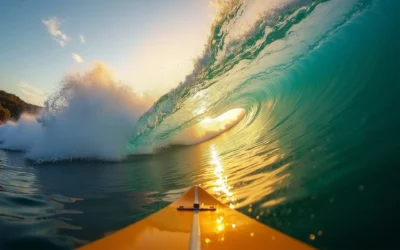It seems there is always a different buzzword that emerges in the business world – from “burnout” to “quiet quitting” – we read about phenomena that, while challenging, often manifest in visible ways, such as reduced output, long absences, or a clear change in behaviour. In a recent live stream that Debbie and Chris did they talked about the a worrying issue that lurking in organisations: quiet cracking.
But if you take the buzzword out and focus on the root cause of the issue, what is the real problems many organisations are facing underneath the hype?
Let’s start with the overall description of ‘quiet cracking’. This is the gradual, often unnoticed, mental disengagement of an employee. Unlike burnout, which is characterised by exhaustion, or quiet quitting, which is a conscious decision to do the bare minimum, quiet cracking is a process of internal detachment. It’s the moment when an employee loses their spark, offers fewer creative ideas, and lacks the motivation to be innovative. Their behaviour may not change overtly, but their spirit and engagement slowly erode, like a hairline fracture spreading unseen.
The ‘cracks’ in the System: Understanding the root cause
The triggers for quiet cracking can include poor leadership and managerial communication, alongside macro concerns about job security and the rise of AI. These factors create an environment of psychological insecurity, but it is the frontline manager’s role to act as a buffer and a bridge. When they fail to do so, the cracks begin to show.
In today’s hybrid and remote work models, where face-to-face interaction is less frequent, the traditional methods of checking in with employees may not be enough. The subtle cues—a change in body language during a team meeting, a hesitation in a response, a lack of contribution to a brainstorming session—can easily be missed. A manager who sees their role as purely transactional, focused on task completion over human connection, will inadvertently create the perfect conditions for quiet cracking to thrive. They fail to build the trust needed for an employee to voice concerns, whether about their workload, their career path, or their fears about AI-driven change.
This is the great challenge for leaders today. While the business may invest in state-of-the-art mental health support or upskilling programmes, these tools are only effective if managers are equipped to notice when an employee is in need. The responsibility for addressing quiet cracking starts and ends with the people manager, and It requires the adoption and advocacy of three simple, yet profound, actions.
Action one: The power of observation. Notice the subtle shifts
Great leaders notice things. They understand that managing people is not a desk-based task, but a continuous process of connecting with the dynamics of their team. Their ability to notice subtle shifts in behaviour is the first, and most critical, line of defence against quiet cracking.
This goes beyond a simple check-in. It requires a manager to be genuinely immersed in their team’s interactions, whether in the office or on a video call. Are you seeing anyone who used to be a lively contributor now consistently staying silent? Is someone who was always first to offer help now hanging back? A manager who lifts their head from their day-to-day tasks to observe these interactions frequently will be better positioned to notice when something changes. They recognise that their team members are more than just a list of tasks—they are individuals whose moods and energy levels fluctuate. Noticing these shifts is an act of proactive empathy; it signals to an employee that they are not just a cog in the machine but a valued person whose well-being is seen and cared for.
This practice requires managers to focus on and create space for genuine awareness. It’s about being present for your colleagues.
Action two: The courage to ask. Fostering a culture of feedback
The second action is to ask. Great people managers are not afraid to reach out to their team members and ask timely and insightful questions that encourage team members to be open and honest about how they are really doing. . Questions about workload, their temperament, or things you’ve noticed in their behaviour, performance, or interactions are all helpful.
However, sometimes the most impactful questions are those that encourage direct feedback and a level of vulnerability from the manager themselves. A manager who asks, “What can I do more of to support you?” or “What am I doing that’s causing you challenges?” can enable the changes the employee needs to heal the cracks. This simple act demonstrates a profound commitment to their team’s well-being and signals that the relationship is a partnership, not a hierarchy.
Ultimately, this is not just about “fixing” an employee; it’s about building a management culture rooted in empathy, trust, and communication. It’s about moving from a reactive position of damage control to a proactive stance of support and development.
Action three: The art of active listening -hearing what’s unsaid
Building on the power of noticing, and asking questions, the final critical action has to be listening – or why bother with the first two! While employee surveys and formal listening strategies have a clear place in understanding the overall organisational mood, they can never replace the value of regular, genuine interactions between a people manager and their team members. And in those interactions, great managers will truly listen to what someone is saying, and just as importantly, what they are not saying.
Active listening is a skill that requires a conscious effort. It means paying attention not just to the words, but to the emotion behind them. Is the language being used more emotive or withdrawn than usual? What does the person’s tone or body language reveal about their state of mind? Taking note of these non-verbal cues provides invaluable information about what is happening for an individual. But listening is only the first part. To be truly effective, a manager must also be prepared to probe for more information, asking open-ended questions that encourage a deeper conversation.
This is where the real work of building trust begins. By demonstrating a willingness to understand and act on what you are hearing, you show that the conversation is not just a formality. When employees feel heard and know that their concerns will be taken seriously, they are far more likely to feel supported and to open up about the issues that are contributing to their disengagement.
What business leaders can do about ‘quiet cracking’ in the workplace
Quiet cracking may be an invisible threat, but the solution is clear and actionable. It requires leaders to acknowledge that their greatest asset is their people, and that effective people management is the most powerful tool they have. Addressing this phenomenon isn’t about implementing complex new technologies or processes; it’s about a return to the basics.
By training managers to notice the subtle signs of disengagement, to have the courage to ask the right questions, and to listen with genuine empathy, organisations can create a culture where quiet cracking is proactively challenged. This approach not only reduces risks for your workforce but also builds a more resilient, engaged, and productive team.


